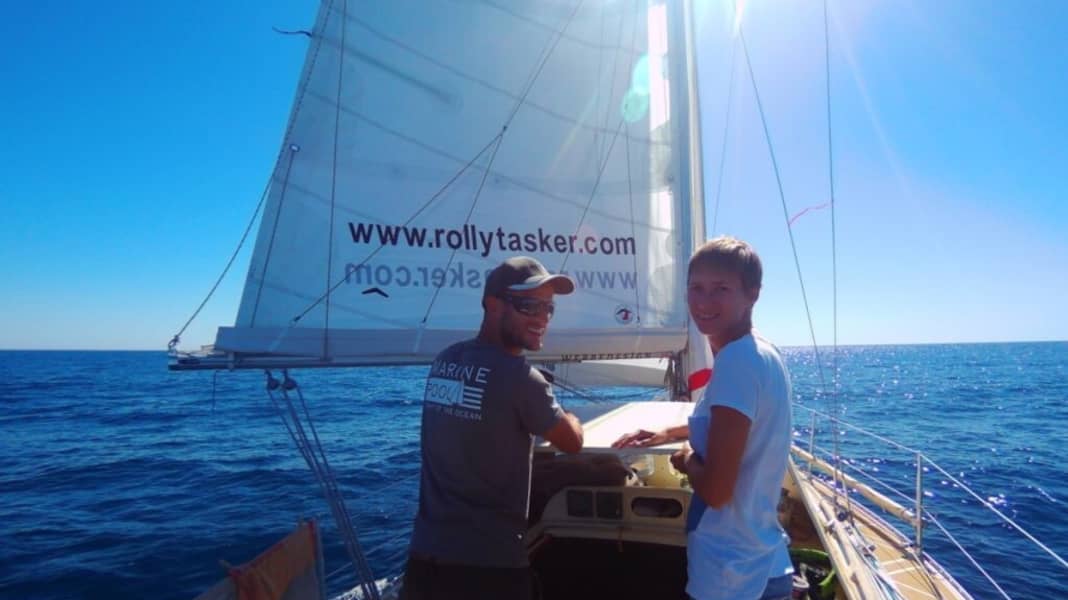
Initially, the Finkbeiners travelled from Lake Constance and the Rhine via the French canals to Marseille and then on across the Mediterranean to Gibraltar. While the classic route would have taken them via Madeira to the Canary Islands, the pair decided to sail south along the Moroccan coast. Here is their latest report:

"La Linea on the Spanish side of Gibraltar is our last stop on the European mainland. From here, a new part of our journey begins: the Atlantic Ocean. The Pillars of Hercules, the 426 metre high Gibraltar Rock on the European side and the Jbel Musa on the African side, which is exactly twice as high at 852 metres, mark the entrance to the Strait of Gibraltar and thus the gateway to the ocean.
In the Strait, the wind blows either from the east or west - and usually relatively strongly due to the jet effect. Other wind directions are rare here. In addition, there are strong currents due to the tide and the difference in water levels between the two seas, mostly from the 1.6 metre higher Atlantic into the Mediterranean. Three hours after high tide in Gibraltar, there are westerly currents near the shores, the so-called neer currents, which flow in the opposite direction to the main eastward-flowing current.
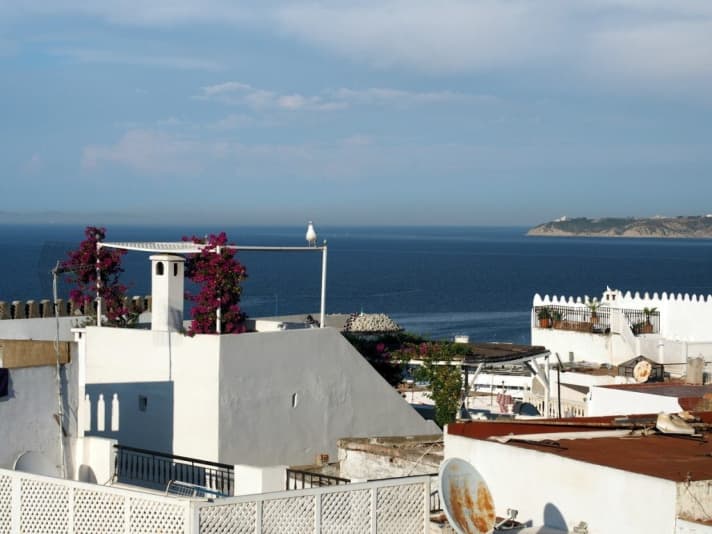
So the time of departure needs to be well chosen. In our case, the forecast is for ideal sailing conditions for our "Aracanga" with 15 to 20 knots of wind from the east. Leaving the Bay of Gibraltar, we stay on the northern side of the Strait until we reach Tarifa, the southernmost and probably windiest city in Europe. The wind and current push us westwards at a good eight knots over ground.
Then we head across the traffic separation scheme to the African side, where the neer currents set in a little later and give us an extra four knots. Although we have only set the jib, it's a rough ride to the west.
Africa instead of Madeira
While most sailors head for a destination in southern Spain or the Algarve after crossing the Strait of Gibraltar, or embark on the first long crossing to Madeira or the Canary Islands, we decided to explore the west coast of Africa. In La Linea, we use the good internet to do some research, as there is very little information for sailors about north-west Africa.
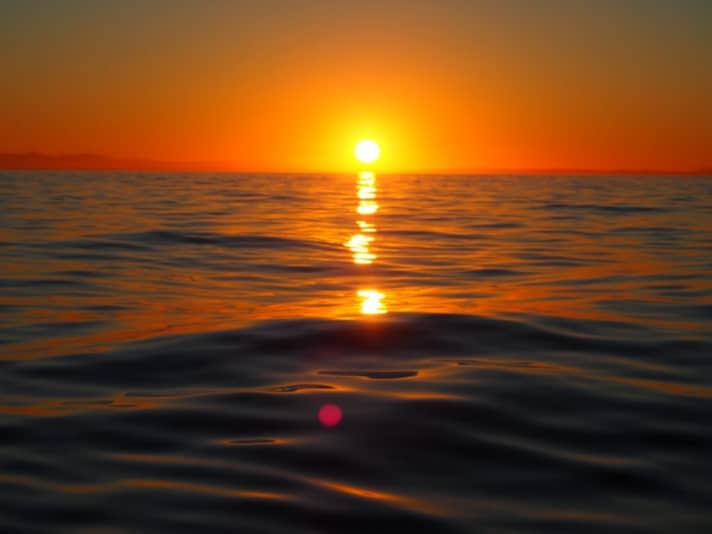
A plan is gradually taking shape: the first destination is Morocco, where there are several good harbours and the country has upgraded its infrastructure for sailors in recent years. There are a few good marinas along the coast, and the Tanja Bay Marina in Tangier on the west side of the Strait of Gibraltar has recently opened.
We would like to head for Tangier, Rabat and possibly Agadir. After Morocco, we are planning a short stop in Lanzarote before travelling on to Dakar, the capital of Senegal. We will skip Mauritania to the south of Morocco, where the security situation seems somewhat more critical than in the neighbouring countries.
We have read various, sometimes contradictory reports about Senegal, especially with regard to the security situation. We have therefore only planned a stopover in Dakar for the time being and will then look further locally. The next destination and the real reason for travelling along the African coast is The Gambia. The Gambia is surrounded on three sides by Senegal and borders the Atlantic Ocean to the west. The country stretches along the river of the same name and is primarily known for its diverse ecosystem.
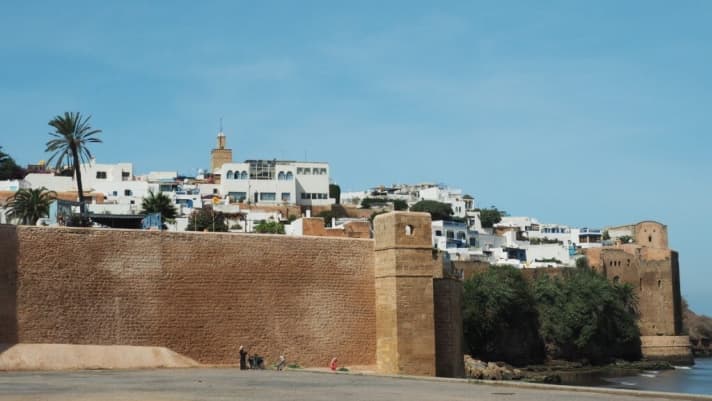
From The Gambia, we want to sail to Cape Verde and onwards across the Atlantic, but there are still many miles to go before then.
Our first stop in Africa is Tangier, and after a day's journey of 30 miles we moor at the customs jetty in the recently opened, huge Tanja Bay Marina. Clearing in is quick and uncomplicated. The only thing that causes a stir is our drone, which is confiscated by customs for the duration of our stay and registered and locked away by the boss himself.
Plenty of space in the new harbour
The search for a berth in the huge marina turns out to be very complicated for reasons we don't understand, although only 15 of the 400 berths are occupied. After about an hour, the harbour master solemnly announces that he has now found a suitable berth for our boat and would we like to have a look at it first before we moor there.
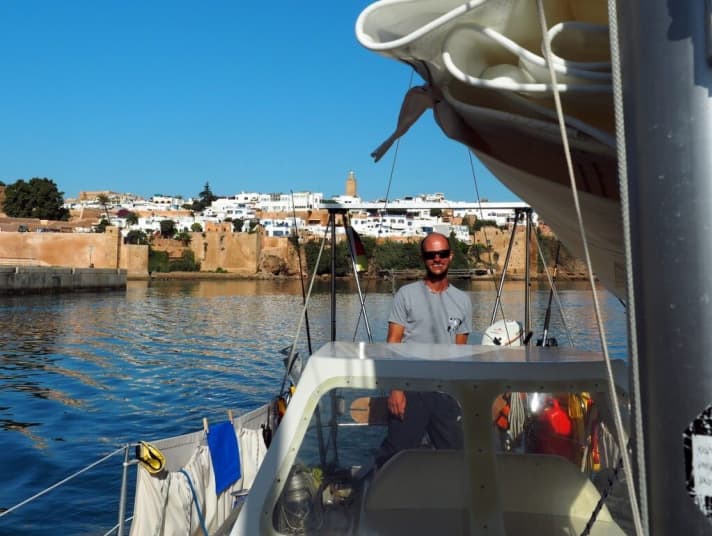
After the inspection and our expression of satisfaction with his choice, there is brief confusion as to who the captain is, i.e. why the woman is at the wheel - they're crazy, the Europeans!
Morocco is only a day's sailing from Europe, entry is uncomplicated and no visas are required. The new marina in Tangier, which is protected on all sides and employs more security staff than there are currently boats in the marina, opens up a completely new area for many sailors, either as a short stop on the "transit" to Madeira, as an alternative to wintering, as the first stop on a Morocco cruise or to keep the boat in a safe place while exploring the country by bus, train or hire car.

Tangier is the provincial capital with around 750,000 inhabitants and is one of the most important trading and harbour cities in Morocco. It is the oldest continuously populated place in Morocco and is still a centre of drug trafficking and smuggling. Tangier has always been steeped in myth - Noah's Ark is said to have landed here after the Flood. For a long time, the city had the status of a free trade zone and attracted speculators, soldiers of fortune, arms and drug traffickers, prostitutes, artists, free spirits and the international jet set.
Between Orient and Occident
The city is the border between the European Occident and Arab culture, and this is still visible on every street corner, if not more so today. The medina (the old town) and the kasbah (the castle), the old part of the city, merge almost seamlessly into the modern new town with its high-rise buildings, banking district and promenade; the two parts of the city collide like two worlds.
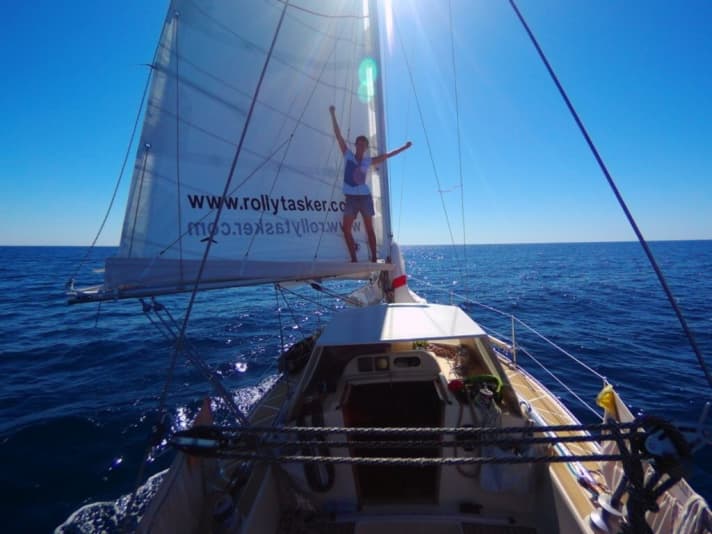
For us, of course, the old town with its souks (markets) is of primary interest. You can find just about anything in the markets in the narrow alleyways: fresh food, mountains of spices, pottery, clothes from burqas to lingerie, modern and antiquated electronics through to cheap and overpriced kitsch.
In between, there are small food stalls and kiosks where you can get tasty, local dishes such as tajine or couscous in all variations for a reasonable price. Traditionally, sweet green tea with fresh mint or freshly squeezed juices are available to drink.
For us, Morocco is a new and exciting world, beautiful, fascinating, but also exhausting. You can hardly get enough of the hustle and bustle of the market, but you mustn't linger too long, otherwise, whether you like it or not, you'll have a carpet dealer, drug seller or self-appointed city guide at your side.
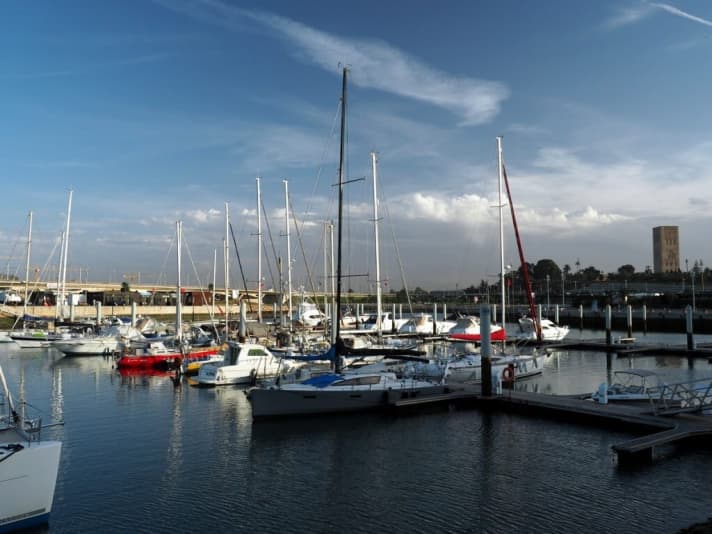
The bustling old town captivates us, but we are still glad to have our boat as an antidote to the hectic city life.
After three days in Tangier, the weather looks good for the leg to Rabat, the capital of Morocco, about 130 miles to the south on the Atlantic west coast. For the first few hours up to Cape Spartel, the most north-westerly tip of Africa, Neptune gives us a lot of wind and waves.
The cape officially marks the border between the Mediterranean and the Atlantic, which is celebrated with a sip of rum for the crew and Neptune. Shortly afterwards, we change course to the south and leave the Gibraltar Strait. The wind and waves drop and we are pushed southwards by a gentle 15 knots along the African west coast and along eternal sandy beaches.
On the second evening of the crossing, about 50 miles from Rabat, the wind drops so much that we are more bobbing than sailing. But as we won't be able to enter the marina until high tide through the Bou Regreg river at midday anyway, the calm doesn't bother us much. Nevertheless, at some point during the night we decide to start the engine, because from the 100 metre depth line onwards there is a lot of hustle and bustle with small fishing boats that are only very sparsely lit, if at all.
As every boat has at least one fishing net, sometimes better, sometimes worse, sometimes not labelled at all, the night turns into an exciting zig-zag journey.
At sunrise, we are a few miles north of Rabat and call the marina on the radio to order a pilot to guide us through the shallows in the river at midday high tide. You need to be lucky with the weather to be able to enter the marina in Rabat, as the entrance is too dangerous above two metres of wave and the harbour is closed. The marina in Rabat is about a mile upriver; once in the harbour, you are protected from all weathers.
Opposing neighbours
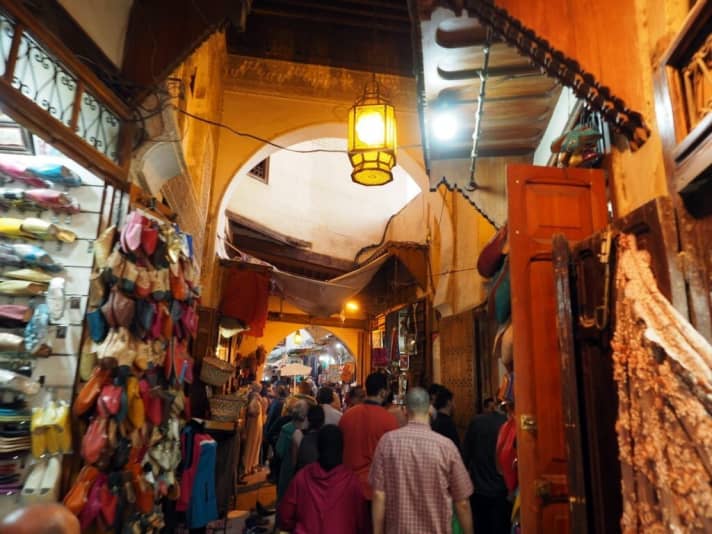
The entrance to the river is beautiful, behind the pilot boat we pass between the two old towns of Sale and Rabat, past the aforementioned fishing and rowing boats, which are bright and colourful, and on to the customs and police jetty to clear in, which has to be done again in every port here in Morocco.
Strictly speaking, we are not in Rabat, but in the neighbouring city of Sale on the north side of the river. Rabat and Sale form a metropolis of millions, with Sale taking on the role of the residential city of factory workers in the shadow of the capital. The medinas of the two cities are only a few hundred metres apart on the south and north banks of the Bou Regreg.
The river with its natural protected harbour has always been of great importance to both cities; protected natural harbours are few and far between on the northwest African coast. Nevertheless, Rabat and Sale could not be more different.
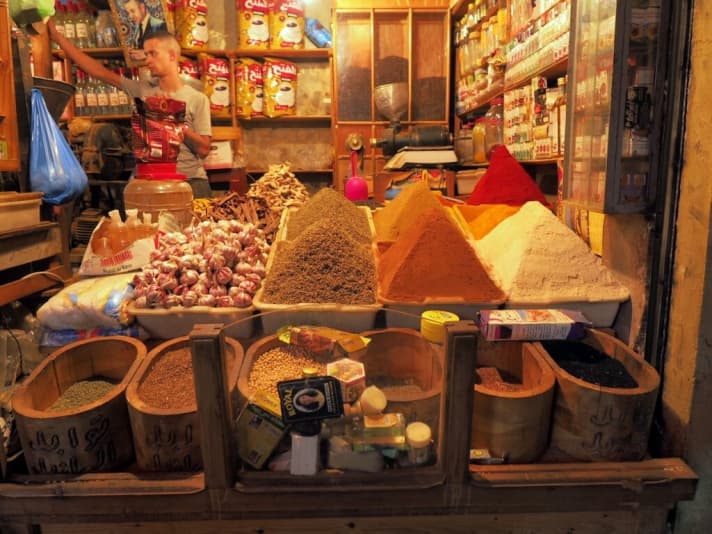
Rabat as the capital is clean, spruced up and designed for tourism. The Kasbah is relatively small, but beautiful and decorated with great attention to detail. Sale, on the other hand, is poor, cramped, dirty and yet fascinating.
Tourists hardly ever get lost in Sale, where the meat and fish are for sale unrefrigerated on rough wooden planks, and a tajine costs the equivalent of two euros on the street corner. Sale is a city where you feel guilty about taking out your expensive camera and taking photos, whereas in Rabat you don't even think about whether it's inappropriate.
Rabat-Sale is also conveniently located for exploring the interior of Morocco. And you can easily and safely leave the boat here alone in the marina for a few days. So we get a hire car and make our way to Fez. This is supposedly the most beautiful of Morocco's four royal cities.
At 2.8 square kilometres, the medina of Fes is the largest in North Africa and is home to over 400,000 people. For someone who did not grow up here, the city gives the impression of an almost unmanageable labyrinth.

The alleyways are so narrow that only mules are suitable as a means of transport, and if it weren't for the Arabs' love of mopeds and smartphones, you could easily feel transported back to the Middle Ages.
Mountains of fresh fruit and vegetables, sacks full of oriental spices, the centuries-old tanners' quarter and the many small sewing workshops make the city an unforgettable experience. There is haggling and trading at every corner. What quickly sounds like a heated argument to us is usually just a lively sales pitch.
Excursion to the royal city

Fez is a very special experience. However, it is easy to forget that the medina is also a place for poor people who cannot afford to live in the smart new residential areas, that child labour is commonplace here and that many people cannot read or write.
Back on the "Aracanga", we wait for a suitable weather window to sail the almost 500 miles to the Canary Islands, but this is a long time coming. Hurricane Leslie and its after-effects keep us trapped in Rabat for the time being. The marina is closed due to the high swell.
Both the wind and the waves will decrease over the next few days, and it looks like it will be a light wind crossing to Lanzarote. But that doesn't matter, we are so full of impressions from a wonderful country that a few days' rest will do us good to process everything.
Precinct tips:
Safe marinas for yachts in Morocco (Atlantic side, from north to south) are Tangier and Rabat, Mohammedia, Agadir. Other harbours / moorings / anchorages on Morocco's Atlantic side are Asilah, Larache, El Jadida, Safi and Essaouira. The most and best information about Morocco can be found at www.noonsite.com.
Further information, pictures and articles on the voyage of the "Aracanga" at Ahoy.blog.

